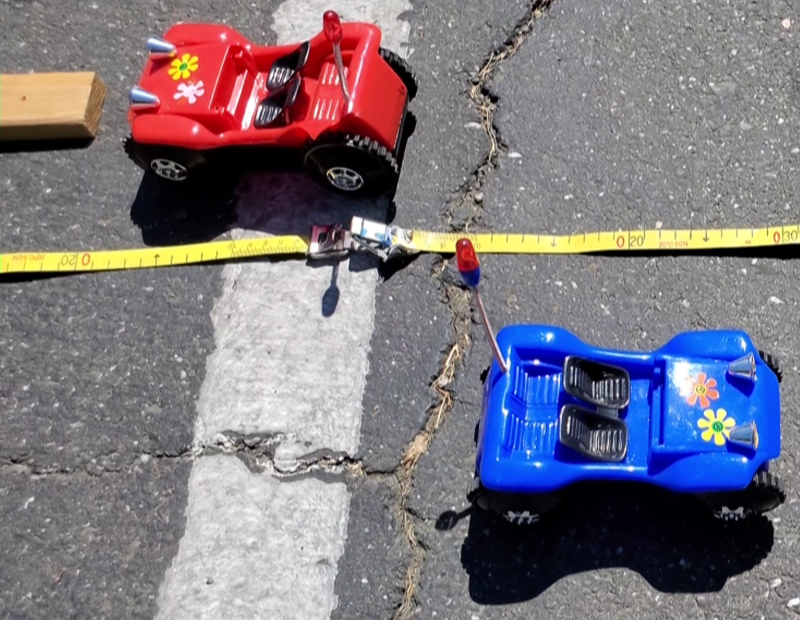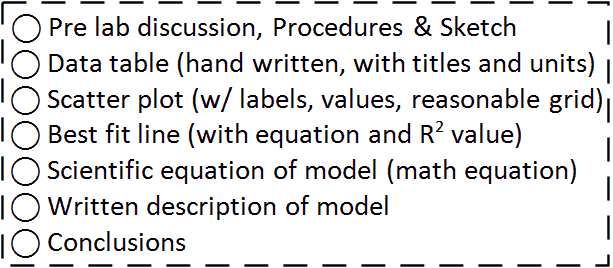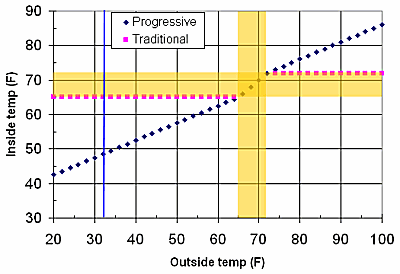Metric conversion and proportional reasoning
Background
A teacher presented the following question on the Physical Science email list of the National Science Teachers Association:
I’ve run into a roadblock and hope someone can assist. This year we will be teaching conversions in the metric system for our physical science classes. We kind of skipped over that in other years. Anyhow, I’m not sure how to present it. I found 3 ways and was wondering if anyone could let me know if one works well over the others – or if they will all be a challenge! I teach low level, mainly Hispanic population students. Many are smart, but most will give up if it is too hard.
- teach them to move the decimal for each place they move left or right along the metric prefixes.
- teach them to multiply or divide by 10 for each place they are moving to the right or left amongst the metric prefix.
- teach them dimensional analysis method (factor labeling)
My response was (with some editing for clarity):
I find there is too much emphasis on “chain” conversions, and conversions in general. But since you have to do it (probably a good thing), I’d suggest that the method that makes it the most “real” and not just memorizing a process is use a proportional reasoning.
Developing proportional thinking
Start with money!
With your low level kids (and probably any kids), I’d start with money (probably more interesting to them than measurements of distance, especially metric). Ask them if they have $1, how many pennies would that be (have each student write it down before you give the correct answer). Continue with a few other examples, ($1.25, $2.00), then ask them the reverse: If I have 150 pennies, how many dollars is that? If you keep it above one dollar, they’ll all probably get it. Then, ask them how many dollars you have if you have 15 cents. Some will say “You don’t have any dollars.” Others will get it correctly that you have $0.15.
You might even have a dollar that you’ve ripped into two pieces, $0.15 worth and $0.85. A little bit of transparent tape on your side and you may be able to surprise your kids by “ripping” it in front of them and handing them one of them “15 cents.”
Now develop the idea that you can set up a proportion with the “conversion rate” of:
1 dollar --------- 100 cents
Set up a few of the examples you’ve completed already:
1 dollar X dollars --------- = ----------- 100 cents 15 cents
Get them to read this as “1 dollar is to 100 cents as ‘unknown” dollars is to 15 cents”
Many of you kids may be familiar with “cross multiply then divide,” but if many are not you can show them once how it works, then put it in their “tool kits.” Without using “cross multiply then divide,” many kids can relatively easily solve the equation when the “x” is on the top, but when the “x” is on the bottom they have a harder time.
Once they get the hang of this, and since you have many students who may have families in Mexico or other Central American countries, you might do some international money conversions (don’t just do Mexican Pesos, pick El Salvador Colones, the Euro, Chinese Yuan, etc.; you can use Google to get the conversion rate: just type “one US dollar in Chinese Yuan”)
Next work with standard US units of length
Then I would do some conversions of distance units they are familiar with. I think when we start a difficult math concept with metric units that many of our students don’t understand, then we put them doubly behind. So, work with inches/feet , yards/feet, and feet/mile for a while. Ask them how many miles long is their book (maybe approximate it as 12″ long). Show them how to make new conversion factors from ones they already know (if there’s 12 inches in a foot, and 5,280 feet in a mile, how many inches are there in a mile?).
Then ask them which units would be the best to measure different objects with:
- a book: inches
- the length of a sport field: yards
- the dimensions of your classroom: feet
- distance to a distant city: miles
This should get them to start to understand why we have all these different metric units.
Metric conversions
When you finally get to metrics, show them that “meter” is part of every unit for length. Introduce the prefixes and their values and show them as “conversion rates:”
1 meter ---------- 1,000 mm
or
1,000 meter ------------- 1 km
I wouldn’t start with decimals in your conversion rates, but rather encourage them to ask themselves “how many of the smaller units does it take to make up one of the larger units”.
Then have them measure some standard items around the room (a piece of paper, the length of each side of the room, a nickel, etc.). Ask them what’s the best unit to measure these in. Then have them convert these to different metric units (how long is a piece of paper in mm? How long in meters? How long in km?).
They may have to make some of these as “two step” problems: Going from mm to meters, then meters to km. They’ll have to set up their proportions twice. Resist the temptation to show them the “shortcut” of chain factor labeling. If they LEARN what unit conversion really is, they’ll be able to handle the chain conversions they may be presented with in chemistry.
I would agree with another poster to the list: Don’t spend any time on prefixes that are not commonly used. Keep it to the “thousands” (103, 106, 10-3, etc.) and then tell them they need to know “centi,” but remind them that they already know there are 100 cents in a dollar. You can also throw out computer prefixes (mega, giga), and most will probably have heard of “nano”. Show them how common the use of these prefixes are in general life/news.
A better way?
This is all written up fairly lecture/discussion format. It would be better to present it in a hands-on method, so be sure to have rulers, meter sticks, etc for them to do some measuring themselves.






I like the idea of starting with money. I don’t know, however, how to teach lengthier conversions, like inches to kilometers, where you’re converting through several different units. I know how to quickly set it up. I don’t know how to teach it in any way that doesn’t strike my students as gibberish or magic or both.
Dan, I’m not sure why there is such focus on multiple chain conversions. If I want to convert from inches to kilometers, I’m likely to just type “136 inches in kilometers” into Google.
Perhaps, when confronted with a conversion one doesn’t have the ratio for (inches to km), just getting them to problem solve “I know A to B and D to E, so can I figure B to D?”
But again, I find that most of these are just made up because “we’ve always done this” and the only place I see it ever really needed might be gm to moles to moles to gm conversions in chemistry.
trying to help my daughter with metric to english conversions and i”m not getting it myself. just when I think I got it, I run into another problem. Can you help me me with this one and show how you work it out. thank you.
Hi Gary, sorry I missed your comment. Here’s a response for others who may have similar questions.
I’d start with distance conversions. The inch has been defined as exactly 2.54 cm, so 1 inch = 2.54 cm. One can imagine this as either (1 inch)/(2.54 cm) or (2.54 cm)/(1 inch). So, if I want to go from 13 cm to inches, I put (2.54 cm)/(1 inch) = (13 cm)/(x inches); then “solve for x.” One could also think that since it takes 2.54 cm to make one inch, if I divide 13 cm by 2.54, I’ll know how many inches are in 13 cm.
Hope this helps.
This here may also help for unterstanding the coherence: http://inchestocm.com/
I originally used it to unterstand the background about the conversion from english to metric but of course you also can do it in the other direction. 😉